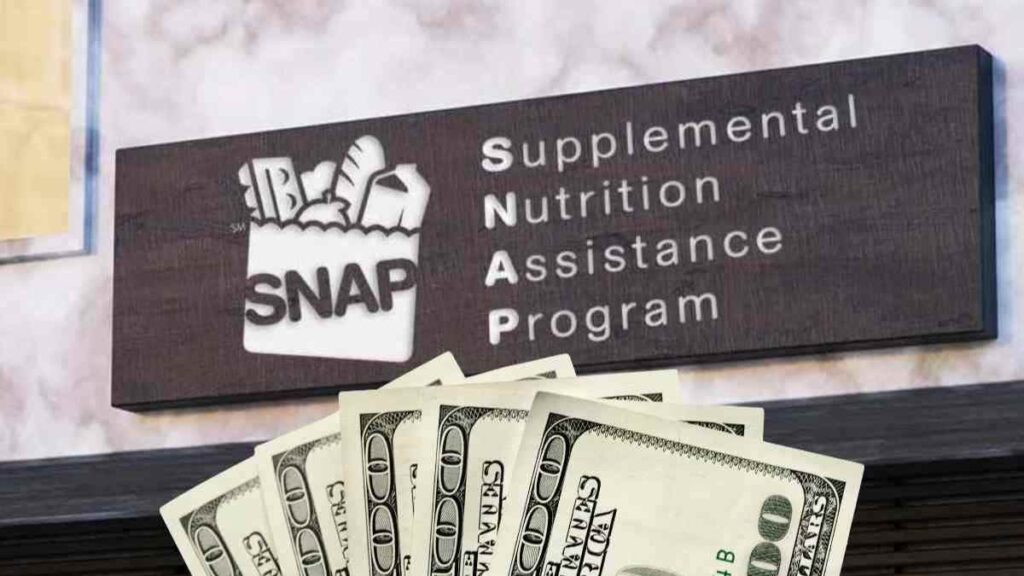The upcoming SNAP Food Stamps benefit payments will soon be loaded onto the EBT cards of thousands of Americans residing in specific states. Due to regional differences, the arrival time of these payments can vary significantly based on the beneficiary’s location.
As a result, some Americans might not receive their SNAP Food Stamps payments during the first week of July. Instead, they may need to wait a few additional days. It’s important to remember that this benefit is compatible with other types of assistance. Therefore, in the upcoming week, beneficiaries could also receive SSDI and Supplemental Security Income (SSI) payments.
SNAP Food Stamps
To stay informed, it’s crucial to review the entire payment calendar for your state. This calendar outlines all the dates when your state might deposit funds onto your EBT card. It’s essential to note that SNAP Food Stamps, SSDI, and SSI payments follow different schedules. As such, while you will receive all these payments within the week, they will not arrive on the same day.
- Payment schedules vary by state.
- SNAP Food Stamps payments may not arrive in the first week of July for some.
- This benefit is compatible with SSDI and SSI.
- Review your state’s payment calendar to know when to expect your funds.
By staying informed and keeping track of the payment calendar, you can ensure that you receive the support you need, precisely when you need it. The arrival of July SNAP Food Stamps payments is just around the corner. Here’s a detailed schedule to help you plan your grocery shopping this month:
July SNAP Food Stamps Payment Schedule EBT Card by State
States with Specific Payment Dates
- Alabama: July 4 to 23
- Arizona: July 1 to 13
- Arkansas: July 4 to 13
- Delaware: July 2 to 23
- Florida: July 1 to 28
- Georgia: July 5 to 23
- Indiana: July 5 to 23
- Kentucky: July 1 to 19
- Louisiana: July 1 to 23
- Maine: July 10-14
- Maryland: July 4 to 23
- Massachusetts: July 1 to 14
- Michigan: July 3 to 21
- Minnesota: July 4 to 13
- Mississippi: July 4 to 21
- Missouri: July 1 to 22
- New Mexico: July 1 to 20
- North Carolina: July 3 to 21
- Ohio: July 2 to 20
- Pennsylvania: July 3 to 14
- Puerto Rico: July 4 to 22
- Tennessee: July 1 to 20
- Texas: July 1 to 28
- Utah: July 5, 11, and 15
- Washington: July 1 to 20
- Wisconsin: July 1 to 15
Once your SNAP Food Stamps money is loaded onto your EBT card, you can head to a participating store and make your monthly purchases with ease. Happy shopping!
How can check the balance on EBT card
- Online, visit http://www.connectebt.com/. Select Virginia EBT from the dropdown box. Then, log in to see your account balance and transaction history for the past 3 months.
- Mobile app: Download the ConnectEBT app to check your balance. You can also review up to 12 months of transactions, confirm your last deposit, and change your PIN anytime, anywhere. The app is available on Google Play and the Apple App Store.
- Receipt: Every time you make a purchase with your EBT card, the receipt will show the transaction amount and remaining balance. Save your receipts to keep track of the account balance.
- In-store balance inquiry: Many stores have a Point-of-Sale device where you can swipe your EBT card, enter your PIN, and do a balance inquiry.
- Phone: Call the toll-free customer service number at 1-866-281-2448. Enter the 16-digit number on the front of your card and listen to the balance.
Can SNAP Food Stamps payments be delayed in certain states?
Yes, some states can delay SNAP (Supplemental Nutrition Assistance Program) food stamp payments. Here are the key points:
- SNAP is administered by each U.S. state, while funds are provided by the federal government. The USDA’s Food and Nutrition Service oversees the program.
- Federal law stipulates that states must process 95% of SNAP applications and payments within 30 days. However, many states across the country are not meeting this requirement.
- As of early 2024, the worst states for timely SNAP processing are Washington D.C. (43.47% on time), North Dakota (55.68%), New York (64.95%), Florida (66.37%), and New Mexico (72.81%).
- Tens of thousands of SNAP applications have been delayed in states like Tennessee and Colorado. The delays were due to problems with new processing systems. Florida has also experienced delays due to glitches with their application portal.
- When states are late, the USDA offers help. It also requires them to make plans to fix the problem. If delays persist, the USDA can begin a formal warning and funds withdrawal process.
